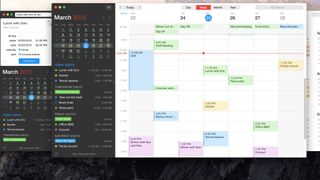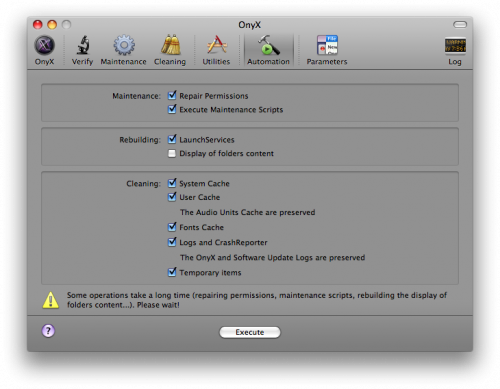Oct 27, 2016 Apple has discontinued its non-Retina legacy MacBook Pro, the last Mac it sold with a built-in CD/DVD drive.The 13-inch notebook had not been updated since June 2012, but. It also has helped that since 2006, when Apple switched to Intel processors, users have been able to run Microsoft Windows on their Macs. Tapping Graphic Potential Macs’ growth in radiology departments has been fostered by the development of OsiriX, an open-source DICOM viewer comparable to the software on high-end imaging, proprietary vendor. Now imagine buying software for both reading car data PLUS car tuning / reprogramming car chip data. You're looking at least over $25,000. And there's no guarantee competitor software will 100% because you're dependent on ONE software only to do the job. With TOAD, you'll have multiple software applications as form of backup.

What Diagnosis Do I Have
Apple hardware is famed for its ease of use and reliability, but iPads aren't immune to problems. Here's our handy guide to fixing your iPad, iPad 2 or new iPad. When Apple announced new Macs last week, one thing that was notably absent from the new models presented was an optical drive.While Apple has been phasing out CD/DVD drives since the introduction. Jan 18, 2012 While Disk Utility doesn't fix physically failing disks, it can help speed diagnosis. Using Mac OS X Lion, open Disk Utility (found in ApplicationsUtilities).
Windows computers have a number of wellknown and easy-to-use diagnostic tools, but the people in the Mac camp lackthat versatility. MacOS is known to be harder to work with, and most users findit easier to let a specialized tech handle the problem rather than deal with iton their own.
But if you hail from the land of DIY, thenthese tools are for you. We’ve put together a list of some of the most usefuldiagnostic tools on macOS to help you figure out why you’re leaking memory, whyyour CPU is maxing out, and where all of your hard drive space has gone.
OnyX (Download)
OnyX is a free disk utility for the Macthat’s perfect for ferreting out why things aren’t running as quickly or assmoothly as they should be. OnyX lets you run diagnostics on your hard drive,perform various system maintenance tasks, and delete caches you might not evenknow are there. It also provides access to a lot of hidden features in macOS.
The best part? OnyX is totally free. Theprogram is consistently updated to work with the most recent OS updates, so youdon’t have to worry about incompatibility. The creator releases updates soonafter Apple does, so if it doesn’t work quite right immediately after theupdate, give it a bit of time.
Disk Utility
Disk Utility is a disk utility (surprise!)provided with macOS that helps handle drive errors and corrupted files. It’salso the go-to tool if your Mac won’t boot into its operating system. If you’venever heard of it before, you can find it tucked away in the Applications >Utilities folder.
Since Disk Utility comes with macOS, it’s afree program. If you have a drive that is throwing errors, you can run FirstAid on it after you launch the utility. You can also use this utility to createan image of your drive and export it to an external hard drive—a useful featureif your hard drive is failing.
MemTest86 (Download)
Apple computers are inscrutable in moreways than just their OS. Many of them make it difficult, if not impossible, towork on the hardware or modify it in any way. A Macbook tends to have all itscomponents soldered to the motherboard, but iMacs usually provide a way to swapout RAM. But as anyone that has worked with RAM before knows, it can be faulty.
When you find your RAM not workingproperly, give MemTest86 a spin. It’s a program that can be downloaded to abootable USB drive. When you want to use it, just press down the Option key asyour Mac boots. MemTest86 will test your RAM for any instability and help younarrow down where your memory problems might come from.
Malwarebytes (Download)
Malwarebytes is one of the most commonlyused programs for testing for malware. It’s more common for Windows users, butdespite the common belief, Macs can fall prey to malware and viruses.Malwarebytes is simple to use. Just run the scan at least once per month, ifnot once every two weeks, to make sure your Mac is free of any malware.
Even if the chance for a malware infectionis low, it’s still good to be on the safe side of things. A quick scan a coupleof times a month will keep you protected from phishing software, keyloggers,and much more.
DIY Diagnostics
As with any tool that lets you work inside the files of an operating system, use diagnostic tools with care. Make sure you are completely aware of what the commands you’re using do before you use them.
These tools can be tremendously useful for extending the lifespan of your Mac, but misuse of them can cause irreparable damage to your system.

Modern Macs have a built-in diagnostic test that can be used to help troubleshoot a hardware problem. The technology has changed over the years, and the procedure is determined by how old your Mac is.
Do Macs Have Disc Diagnosis Software Free
________________________
There a many ways a problem can crop up on your Mac. It could be a corrupted or failing boot hard disk or SSD, a flaky peripheral or a damaged or conflicted OS X. This article is restricted to the case where you suspect something is wrong with the very Mac itself.
The first step is to determine the OS version and year your Mac was introduced. One way to do this is to use Apple Menu > About This Mac. (If the introduction date for the product isn't specified, you can use a great app called Mactracker to convert a model number to an introduction date.)
The first applicable document here is Apple support doc #PH18765. In summary, as Apple states it:
- If your Mac is from 2013 or later, use Apple Diagnostics, which is built into your Mac.
- If your Mac is from 2012 or earlier and has OS X v10.8.4 or later, use Apple Hardware Test, which is built into your Mac.
- If your Mac is from 2012 or earlier and has OS X v10.8.4 or earlier, use the system software disc or USB flash drive that came with your Mac.
For this how-to, I'll discuss Macs introduced in June 2013 or later and the Apple Diagnostics.
Apple Diagnostics
The Apple Diagnostics has detailed steps on how to shut down your Mac, which peripherals to disconnect, and how to hold down the D key at boot. Note that there is no prefix key used here. Hold down just the D key right after you hear the startup chime.
Software Diagnosis Tool
Note that if you leave the Ethernet cable plugged in and boot with OPTION + D, you can do some extra things, such as access your support and service options and contact Apple support.

You should review this Apple Diagnistics page and even print it so you have a handy reference during the testing. Especially useful are the keyboard shortcuts that are available.
After booting, you'll see a black screen with a progress bar when the Apple Diagnostics start.
Pc Diagnosis Software
The test takes only a few minutes. When it's done, you see a notice with error Reference codes that describe the likely problem. Apple has an extensive page of error Reference codes that describe the problem(s) found, if any.
Test complete and Reference code provided.
If you get the code ADP000, 'No issues found,' you can reconnect your peripherals, reboot and look for the trouble elsewhere. Otherwise, follow the steps listed on the Reference codes page linked above.
Mac Medical Diagnosis
Apple has provided a wealth of information that will help you isolate a possible problem with your Mac's hardware.